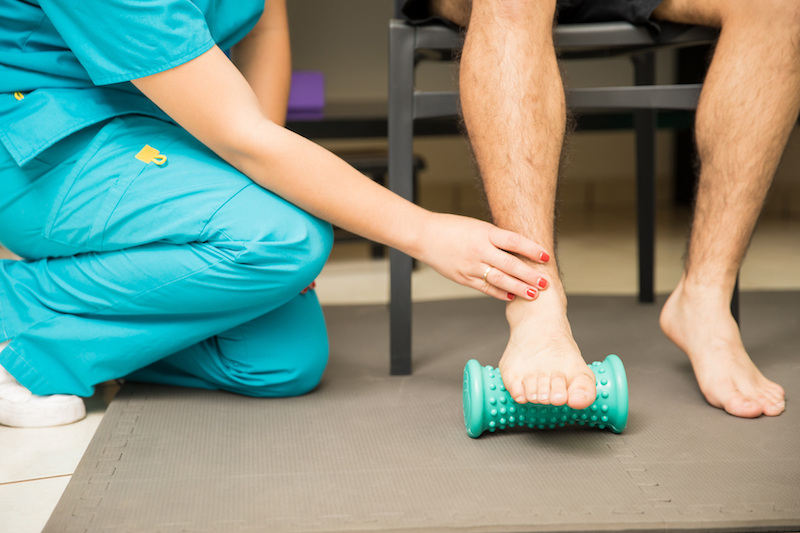IF YOU ARE LOOKING FOR PLANTAR FASCIITIS EXPERT IN VISALIA, WE TREAT A VARIETY OF INTERVENTIONS FOR PESKY HEEL PAIN
If you’ve ever experienced a piercing pain in the bottom of your foot the first thing in the morning, there’s a strong chance plantar fasciitis was to blame. Before you start taking pills, you should consider seeing one of our plantar fasciitis experts in Visalia. As one of the most common causes of heel pain in existence, plantar fasciitis can strike people who exercise too much just as easily as those who wear the wrong pair of shoes. But whatever causes it, most patients would agree that it’s a pesky problem that they’d prefer to eliminate.
The plantar fascia is a thick band of tissue that runs across the bottom of your feet and connects the heel bone to the toes. Its primary purpose is to absorb the majority of the stresses we put on our feet, but it has a limit: too much pressure or strain can damage the tissue and lead to inflammation in that region.
This inflammation results in the most typical symptom of plantar fasciitis: a stabbing pain near the heel that’s usually worse with the first few steps of the day or after standing for a long period of time. Plantar fasciitis is particularly common in long-distance runners, but can stem from repeatedly performing any weight-bearing activities or spending too much time standing every day. People who are overweight, older than 40, and those who have high arches or flat feet are also at an increased risk of developing plantar fasciitis.
As is the case with any other painful condition, trying to push through or ignore plantar fasciitis can go on to cause chronic (long-term) heel pain and may result in pain in other parts of your body if you alter the way you walk. The good news is that most cases of plantar fasciitis with some basic modifications, such as the following:
- Limit or completely stop the activity that led to pain in the first place
- Ice the bottom of your foot for 20 minutes, 3-4 times a day
- Avoid walking around barefoot, which puts more strain on the foot
- Purchase a new pair of supportive shoes with good arch support
If your pain doesn’t improve within a few weeks after making these changes, your next step should be to see a physical therapist, who can address the issue with a number of interventions and techniques. In addition to stretching and strengthening exercises, your treatment program is also likely to include manual therapy, in which the therapist uses their hands to perform a variety of movements and mobilizations to the muscles and soft tissue of the heel that will release muscle tension and reduce pain. There is strong evidence that shows manual therapy techniques to be beneficial for plantar fasciitis, including one study published last year, which concludes as follows:
According to reviewed moderate and high-quality randomized-controlled trials (high-quality studies), soft tissue mobilization is an effective modality for treating plantar heel pain (another term for plantar fasciitis)
In light of this information, we encourage you to seek out physical therapy if you’re experiencing any symptoms that suggest plantar fasciitis is present. Taking this step will put you on a path to recovery and a future with less pain.
gene

